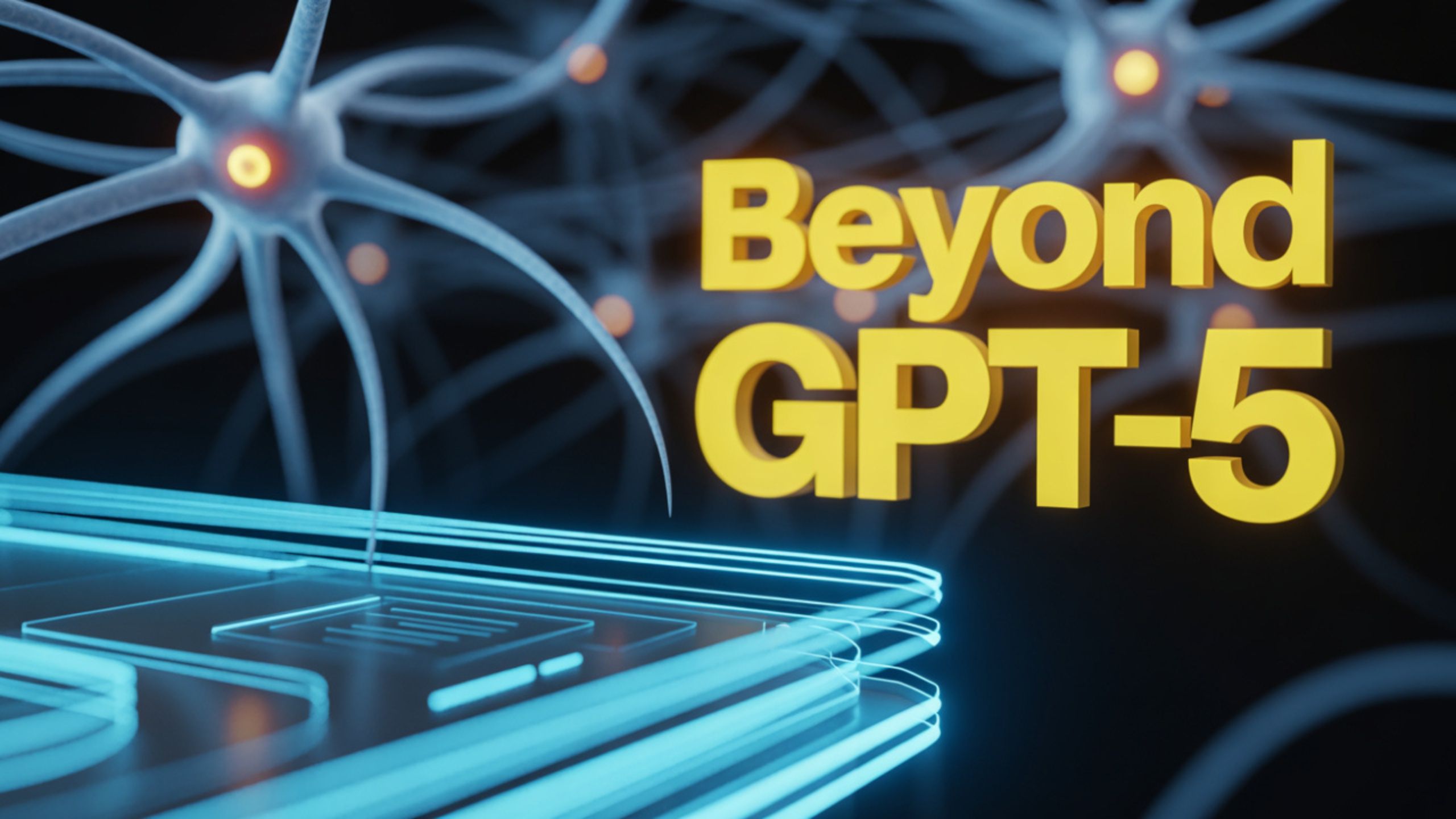GPT-5 Isn’t the Ceiling: OpenAI Has Better Models– During a live-streamed global event, OpenAI has officially released GPT-5, its most powerful artificial intelligence model to date. The launch marks a significant step forward in AI development, with GPT-5 showcasing remarkable improvements in accuracy, reasoning, coding, writing, health applications, and multimodal capabilities. This new model reduces hallucinations (false or fabricated responses) and minimizes sycophancy (overly agreeable answers), addressing two of the most frequent criticisms of earlier versions.
Despite these advancements, OpenAI CEO Sam Altman emphasized that the company is currently constrained by infrastructure and computing limitations, preventing the rollout of even more advanced models. Altman confirmed that OpenAI is investing heavily in data center expansion, with plans to spend trillions of dollars in the coming years to increase capacity.
Why GPT-5 Is a Game-Changer for AI
With every new release, OpenAI pushes the boundaries of artificial intelligence. GPT-5 is a milestone because it excels in:
- Accuracy and Reasoning: The model is far better at handling complex logic and delivering precise results.
- Coding and Development: GPT-5 can generate and debug code with fewer errors, making it an invaluable tool for developers.
- Content Writing: From long-form articles to creative writing, GPT-5 delivers deeper, more human-like text.
- Healthcare Insights: It provides more reliable support in medical-related queries, although it is not a substitute for doctors.
- Multimodal Capabilities: GPT-5 integrates text, voice, and image understanding more seamlessly than GPT-4.
GPT-5 sets a new benchmark for conversational AI by addressing common flaws like hallucination and exaggerated agreeableness.
Altman on Trade-offs and Infrastructure Challenges
In an interview with The Verge, Sam Altman revealed the difficult choices OpenAI faces:
“We have better models, and we just can’t offer them because we don’t have the capacity. We have other kinds of new products and services we’d love to offer.”
This statement highlights the scale of infrastructure challenges OpenAI must overcome. The demand for advanced AI requires unprecedented computing power and GPU resources. Earlier this year, OpenAI faced GPU shortages, forcing the company to limit image generation features, even for paying customers, following the viral popularity of Studio Ghibli–style outputs.
To address this, OpenAI is set to invest in massive data center construction projects, potentially collaborating with industry leaders in cloud computing, chip manufacturing, and green energy solutions.
Mixed Reception of GPT-5 Among Users
While GPT-5 represents a leap forward, its rollout has not been without criticism. Some users have expressed dissatisfaction, citing:
- Shorter, less emotional responses compared to expectations.
- A lack of “emotional depth” in conversations.
- Frustration with delayed features and restricted usage limits.
However, Altman responded to this backlash by reaffirming that GPT-5 is a considerable step forward compared to earlier models. He also revealed that ChatGPT is now the fifth-largest website globally, surpassing most major platforms in traffic. According to Altman, ChatGPT is on a clear path to overtaking Instagram and Facebook, potentially becoming the third-largest website worldwide, though overtaking Google remains a long-term challenge.
OpenAI’s Vision for New AI Applications
OpenAI is not stopping at ChatGPT. Sam Altman confirmed that the company is working on new standalone apps and AI-powered services. These could include:
- AI-powered social media platforms are designed to transform how people interact online.
- Specialized apps for education, productivity, and creativity.
- Deeper integration of AI in healthcare, customer service, and entertainment.
Earlier this year, OpenAI also announced its collaboration with legendary designer Jony Ive, formerly of Apple, to create a next-generation AI device. While details remain scarce, industry experts speculate that this could be a revolutionary consumer product, blending hardware and AI in new ways.
Partnerships and Rivalries in AI Development
The AI race is not only about software—it’s also about partnerships and strategic investments. Altman confirmed that OpenAI will fund Merge Labs, a brain-computer interface startup competing directly with Elon Musk’s Neuralink. This investment reflects OpenAI’s ambition to expand into neurotechnology and human-computer symbiosis, pushing AI beyond screens and keyboards.
The rivalry between Altman and Musk adds an intriguing layer to the AI race. With OpenAI backing Merge Labs, the competition between Neuralink and its new challenger could define the future of brain-AI integration.
The Economic Impact of GPT-5 and Future Models
The release of GPT-5 signals technological progress and economic transformation. Businesses are already integrating GPT models into:
- Customer service chatbots to improve support efficiency.
- Content creation workflows, reducing costs for marketing and publishing.
- Software development pipelines, where AI speeds up coding and debugging.
- Healthcare data analysis provides faster insights into complex medical information.
OpenAI’s push to build trillions of dollars’ worth of infrastructure also reflects the global economic stakes of AI. The AI industry is now considered as transformative as the early days of the internet, with the potential to reshape entire economies.
Challenges Ahead for OpenAI
Despite its success, OpenAI faces multiple hurdles:
- Scalability: Meeting the computing demand of billions of users worldwide.
- Ethical Concerns: Preventing misuse of AI for misinformation, deepfakes, and manipulation.
- Competition: Rivals like Google DeepMind, Anthropic, and Meta continue pushing their advanced AI systems.
- Regulatory Pressure: Governments worldwide are moving to regulate AI, which could slow down deployments.
How OpenAI navigates these challenges will determine whether GPT-5 cements its dominance or faces substantial disruption.
The Future Beyond GPT-5
Sam Altman hinted that more advanced models have already been developed but remain unavailable due to capacity issues. This revelation confirms that GPT-5 is the beginning of a new era.
With upcoming advancements, we may see AI models that are:
- More autonomous, capable of handling entire projects without human intervention.
- Emotionally intelligent, delivering responses with a deeper human-like understanding.
- Ubiquitous in devices, from smartphones to wearables to entirely new consumer tech categories.
As OpenAI continues to expand partnerships, build infrastructure, and explore new applications, GPT-5 may soon look like an early step in the next great leap of artificial intelligence.
Wrap Up: GPT-5 Marks a Turning Point in AI
The launch of GPT-5 proves that OpenAI remains at the forefront of artificial intelligence innovation. With its accuracy, reasoning power, coding capabilities, multimodal functions, and reduced flaws, GPT-5 sets a new standard for AI globally.
Despite criticisms and capacity challenges, Sam Altman’s vision of trillions in infrastructure investment signals OpenAI’s determination to scale AI to the next level. The road ahead includes new applications, hardware collaborations, and even brain-computer interface ventures, painting a future where AI becomes a seamless part of human life.
The coming years will show whether OpenAI can maintain its lead in the AI arms race, but one thing is sure: GPT-5 has already changed the game.
Ask Follow-up Question from this topic With Google Gemini: GPT-5 Isn’t the Ceiling: OpenAI Has Better Models It Can’t Launch Yet

Selva Ganesh is the Chief Editor of this blog. A Computer Science Engineer by qualification, he is an experienced Android Developer and a professional blogger with over 10 years of industry expertise. He has completed multiple courses under the Google News Initiative, further strengthening his skills in digital journalism and content accuracy. Selva also runs Android Infotech, a widely recognized platform known for providing in-depth, solution-oriented articles that help users around the globe resolve their Android-related issues.




Leave a Reply